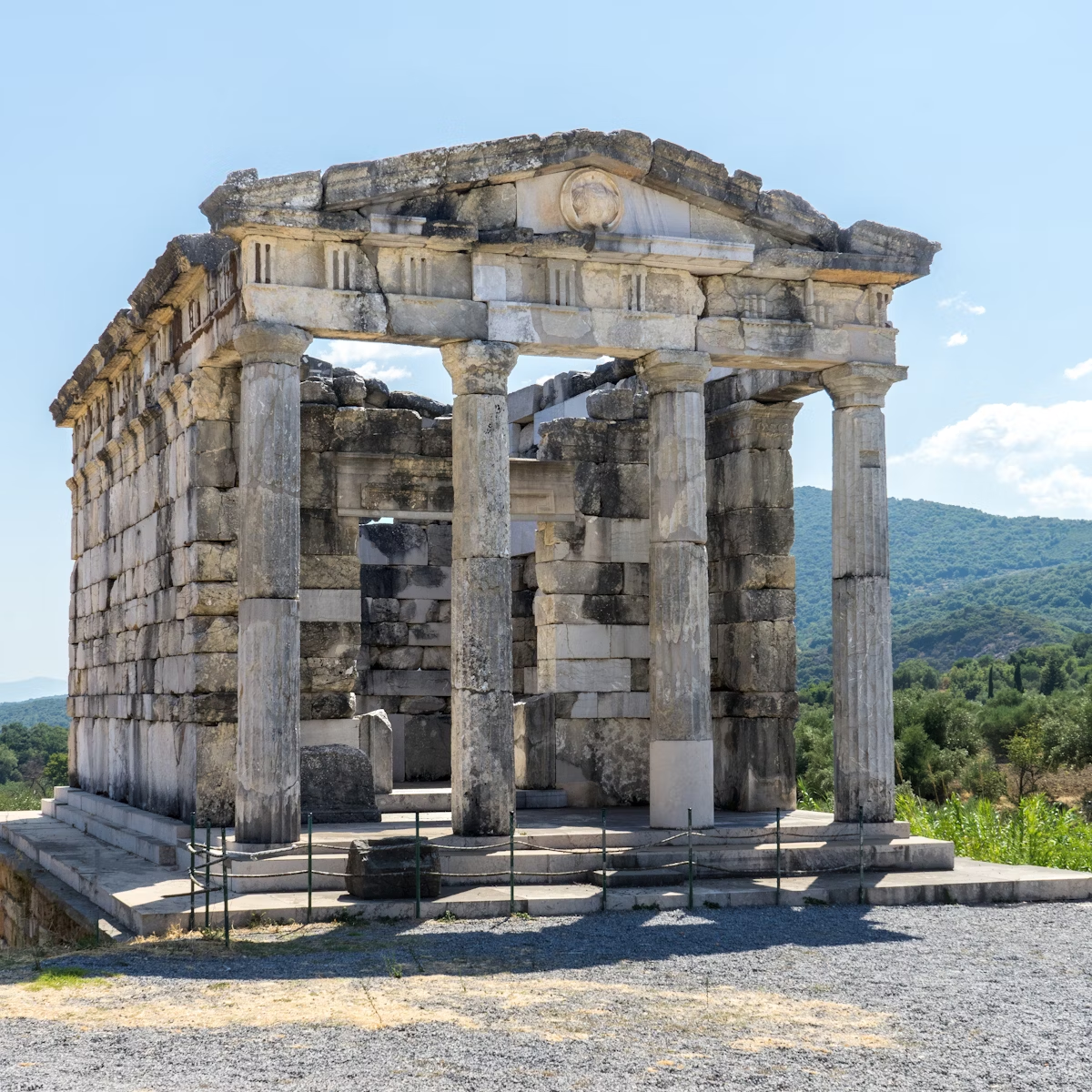Though few buildings are standing that date back to the height of Sparta's greatness, it's an atmospheric stroll around this hillside, where the acropolis and agora made up the religious and administrative centre (8th century BC until the Roman period). There's an ancient theatre, Sanctuary of Athena Halkioitou, stoas, the 'round building' and remains of later Byzantine churches. There are good information panels.
On the north side of the town of Sparta are remains of the Sanctuary of Artemis Orthia.
To get here, head to the King Leonidas statue that belligerently hefts its sword and shield at the northern end of Paleologou. West of here, signs point the way to the ancient site.
From the main cobbled road, signed paths head through olive groves. Near the entrance, the round building dates back to Sparta's apogee and may have contained statues of Zeus and Aphrodite. Take the left fork from here to reach the ancient theatre (1st century BC), a few steps and seats of which are still visible along the overgrown half-circle.
The right hand fork heads north to the acropolis, passing the ruins of part of the agora and the Byzantine Church of St Nikon on the way to the anctuary of Athena Chalkioikos (600 BC) on a small hillock. Some of the most important finds in the town’s archaeological museum were unearthed here. You can also climb to here through the theatre to make a circuit.
If you follow the Tripoli-bound road north of town, a signposted path leads downhill to the remains of the Sanctuary of Artemis Orthia; this is where Spartan boys were flogged till they bled, the bravest awarded bronze sickles which they dedicated to the goddess.




